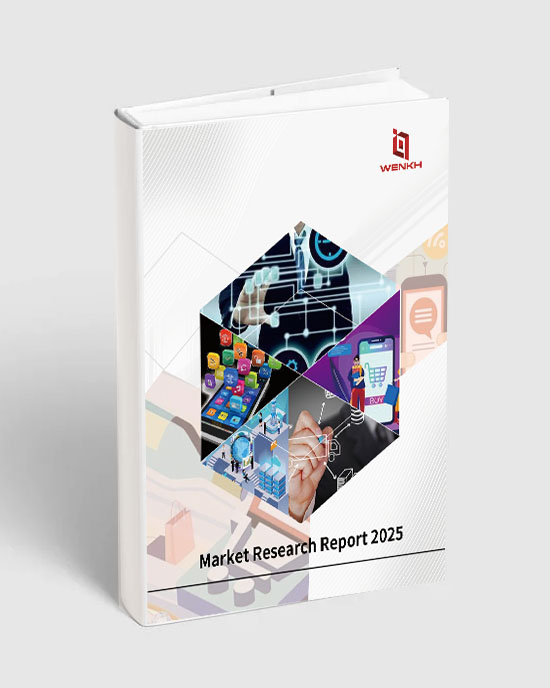
Global Actuarial Modeling Software Market Competitors, Segment Types and Downstream Applications Research Report 2025



Research Summary
Actuarial modeling software is a specialized tool used by actuaries to analyze risk, forecast financial outcomes, and support decision-making in areas such as insurance, pensions, and investment planning. These platforms enable users to build complex mathematical and statistical models that simulate scenarios involving mortality, morbidity, pricing, reserves, and capital requirements. Often equipped with features like scenario testing, regulatory compliance tools, and data visualization, the software helps ensure accuracy, consistency, and efficiency in actuarial calculations. Commonly used programs include Prophet, AXIS, and MoSes, which are valued for their flexibility, scalability, and ability to integrate with enterprise systems. Actuarial modeling software plays a critical role in modern risk management and financial forecasting.
According to WENKH research statistics, the global Actuarial Modeling Software market size will reach 671.69 Million USD in 2025 and is projected to reach 1,065.95 Million USD by 2032, with a CAGR of 6.82% (2025-2032). Among them, the Asia-Pacific Actuarial Modeling Software market is undergoing rapid changes, reaching Million USD in 2025, accounting for approximately % of the global market share. It is projected to reach Million USD by 2032.
The global Actuarial Modeling Software market is highly competitive, with key market players including SAS, FIS Prophet, Moody's, WTW RiskAgility, WNS, Aon, Milliman, Akur8, Stoch Analytics, PolySystems, RNA Analytics, Montoux, Addactis, Slope Software, Insureware, Claros Analytics, etc. This report categorizes the competitive landscape of the global Actuarial Modeling Software market into three tiers based on annual revenue, with the top three market players holding approximately % of the total market share.
This report provides an in-depth analysis of the global Actuarial Modeling Software market, including market size, price trends, market status and future development prospects. It particularly focuses on the market share, product characteristics, pricing, sales revenue, and gross profit margin of major players in the global Actuarial Modeling Software industry. Additionally, this report provides an in-depth analysis of the market status and future development trends of different product segments of Actuarial Modeling Software and their downstream application fields.
In terms of data, this report includes a comprehensive time-series dataset. The historical data spans from 2020 to 2024, providing a solid foundation for analyzing past market trends. The year 2025 is used as a base year to accurately assess the current market landscape. Forecast data covers the period from 2026 to 2032, utilizing scientific analysis methods and models to offer forward-looking predictions and insights into the market's future development. This provides valuable reference information for industry participants and stakeholders.
The report covers countries including United States, China, Germany, Japan, France, South Korea, United Kingdom, India, Italy, Brazil, Mexico, Indonesia, Vietnam and South Africa. It particularly focuses on the sales revenue of Actuarial Modeling Software in these countries, as well as the product segmentation and downstream application market size of each country. The report provides an in-depth analysis of the regional distribution and future development trends of the Actuarial Modeling Software market. By considering local policies, this report evaluates the market prospects of Actuarial Modeling Software in each country, aiming to help companies gain a comprehensive understanding of the industry characteristics and development potential in different regions, optimize regional business layout, and develop precise market strategies to achieve global development goals.
This report places a strong emphasis on data quality and reliability, utilizing diverse and extensive data sources to ensure the accuracy and validity of the information presented. Primary data collection involves multiple channels, including in-depth interviews with senior executives, industry experts, supply chain stakeholders, and end consumers. These interviews provide key insights into corporate strategic planning, industry policy interpretation, supply chain dynamics, and end-user experiences. Secondary data sources cover a wide range of authoritative statistics from government agencies, customs databases, industry associations, third-party paid databases, brokerage research reports, academic research findings, corporate annual reports, financial statements, real-time news updates, and relevant information from international organizations. These data sources serve as a solid foundation for verification and analysis.
Companies Covered
SAS
FIS Prophet
Moody's
WTW RiskAgility
WNS
Aon
Milliman
Akur8
Stoch Analytics
PolySystems
RNA Analytics
Montoux
Addactis
Slope Software
Insureware
Claros Analytics
Product Segment
On-premises
Cloud Based
Product Application
Insurance
Bank
Others
Chapter Scope
Chapter 1: Product Statistical Scope, Product Segmentation Types and Downstream Applications, Overall Market Size, Current Status and Development Prospects
Chapter 2: Global Actuarial Modeling Software Industry Chain Analysis
Chapter 3: Global Actuarial Modeling Software Industry Environment Analysis and Porter's Five Forces Analysis
Chapter 4: Analysis of the Competitive Landscape of Major Companies in the Global Actuarial Modeling Software Market (Market Share, Product Revenue Comparison, Tier Division, Corporate Expansion and M&A Trends)
Chapter 5: Analysis of Global Major Companies (Company Profiles, Product Specifications and Features, Product Revenue and Product Gross Profit Margin)
Chapter 6: Global Actuarial Modeling Software Market Analysis by Countries, Product Segment and Downstream Application
Chapter 7: United States Actuarial Modeling Software Market Size, Product Segment, Downstream Application Analysis
Chapter 8: China Actuarial Modeling Software Market Size, Product Segment, Downstream Application Analysis
Chapter 9: Germany Actuarial Modeling Software Market Size, Product Segment, Downstream Application Analysis
Chapter 10: Japan Actuarial Modeling Software Market Size, Product Segment, Downstream Application Analysis
Chapter 11: France Actuarial Modeling Software Market Size, Product Segment, Downstream Application Analysis
Chapter 12: South Korea Actuarial Modeling Software Market Size, Product Segment, Downstream Application Analysis
Chapter 13: United Kingdom Actuarial Modeling Software Market Size, Product Segment, Downstream Application Analysis
Chapter 14: India Actuarial Modeling Software Market Size, Product Segment, Downstream Application Analysis
Chapter 15: Italy Actuarial Modeling Software Market Size, Product Segment, Downstream Application Analysis
Chapter 16: Brazil Actuarial Modeling Software Market Size, Product Segment, Downstream Application Analysis
Chapter 17: Mexico Actuarial Modeling Software Market Size, Product Segment, Downstream Application Analysis
Chapter 18: Indonesia Actuarial Modeling Software Market Size, Product Segment, Downstream Application Analysis
Chapter 19: Vietnam Actuarial Modeling Software Market Size, Product Segment, Downstream Application Analysis
Chapter 20: South Africa Actuarial Modeling Software Market Size, Product Segment, Downstream Application Analysis
Chapter 21: Research Conclusion
Chapter 22: Methodology and Data Source
Purpose and Value of the Report
Market Trend Insights: Analyze industry trends, market dynamics, and future growth potential to help companies forecast changes and develop strategic plans.
Competitive Landscape Analysis: Understand key players' revenue segmentation, strategies, market share, and business models to guide competitive decisions.
Investment Decision Support: Provide feasibility analysis through market size, growth rate, demand trends, and potential risks for informed investment decisions.
Target Customer and Demand Analysis: Examine consumer behavior, purchasing preferences, and pain points to optimize products and improve market penetration.
Policy and Regulatory Insights: Interpret relevant industry policies to ensure compliance and mitigate regulatory risks.
Business Model Optimization: Offer data-driven suggestions for enhancing business models and improving profitability.





